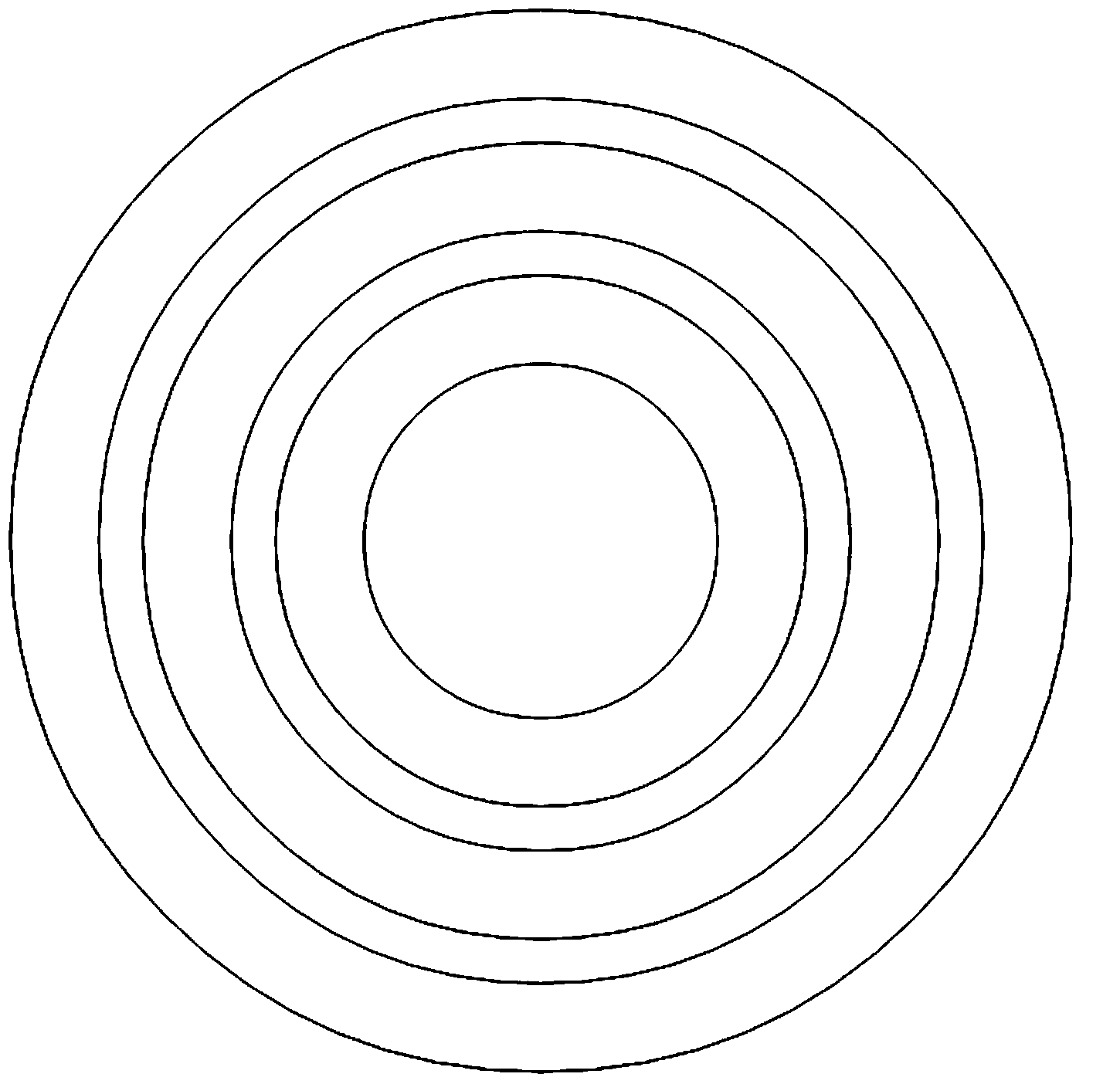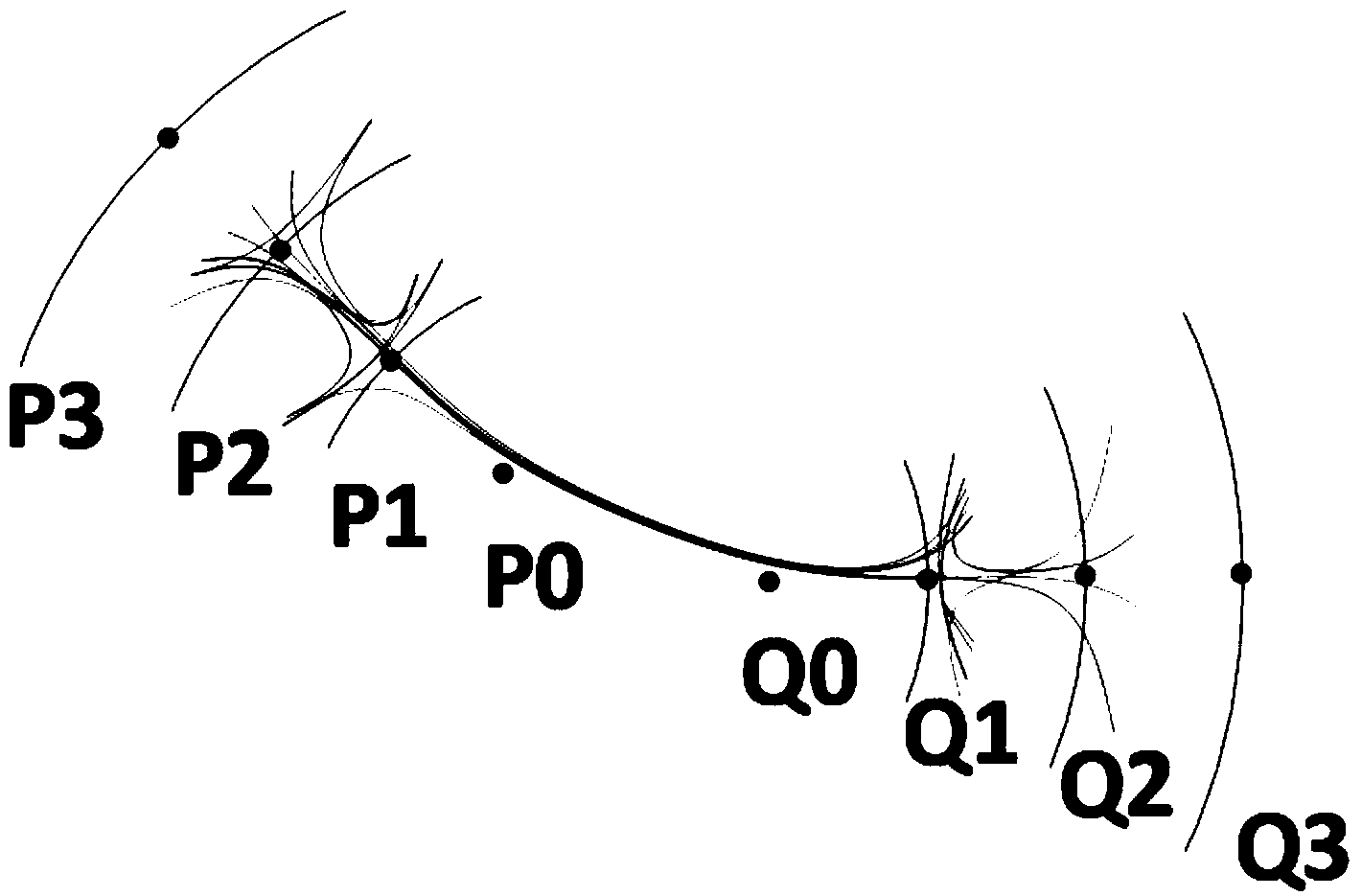Method for determining disease mode of ancient stone cave temple wall painting based on visual analysis
A disease and grotto technology, applied in the field of ancient cave temple mural disease analysis system, can solve the problems of less formation process and mechanism data, complex mural disease degradation mechanism, limited disease information and data, etc., to improve work efficiency.
- Summary
- Abstract
- Description
- Claims
- Application Information
AI Technical Summary
Problems solved by technology
Method used
Image
Examples
Embodiment 1
[0035] Embodiment 1, the symbiosis pattern of disease:
[0036] According to the steps of the method of the present invention, the concentric ring diagram reflecting the disease type information of the grotto murals is obtained, and the information of two types of diseases, cracks and hollows, which exist in the grotto murals are selectively displayed therefrom, such as image 3 As shown, it can be clearly concluded that most of the caves have cracks and hollows, and the dark gray and light gray histograms represent cracks and hollows respectively, which occupy most of the area of the ring. And hollowing and cracking appear almost at the same time, so we can think that cracking and hollowing are symbiotic, that is, when one disease exists, another disease will exist at the same time. Experts in the field were consulted on the basis of the observations, who affirmed the result and explained the symbiosis: since both diseases are related to the stability of the cave building s...
Embodiment 2
[0037] Embodiment 2, the relevant disease pattern of dynasty
[0038] According to the steps of the method of the invention, concentric ring diagrams reflecting the information of cave mural disease types are obtained, and caves built in different periods are selectively displayed therefrom. As shown in Figure 4(a), a total of 8 caves were built during the Northern Liang Dynasty, 7 of which were built on the third floor, and 1 was built on the second floor, and the distribution of disease colors in the figure can be It can be seen that most of the mural diseases in the caves of this dynasty are cracks, hollows, peeling, and falling off. As shown in Figure 4(b), a total of 90 caves were built in the Sui Dynasty, most of the caves were located on the second and third floors, and only 5 caves were on the ground floor. There are 4 out of the 5 caves in the bottom layer with chorizo disease (80%); 9 out of 64 caves in the middle layer have chorizo disease (14%); in the 21 cave...
Embodiment 3
[0039] Embodiment 3, spatial disease clustering mode
[0040] According to the steps of the method of the present invention, a concentric ring diagram reflecting the type information of cave mural diseases is obtained. We select each type of disease to be displayed separately in order to test their distribution patterns, and two of the eight types of diseases show clustering. As shown in Figure 5(a) the dark gray histogram represents that most of the sulfhydric acid is distributed in the outermost layer, and as shown in Figure 5(b) the light gray histogram represents that most of the herpes are distributed in the outermost layer. We guess that these two diseases seem to be related to the ground. According to this phenomenon, experts in the field were consulted. They affirmed this result and gave an explanation, because these two diseases are caused by soluble salt and water, and the closer to the ground cave The more moisture, and therefore the higher the potential to trigger ...
PUM
 Login to View More
Login to View More Abstract
Description
Claims
Application Information
 Login to View More
Login to View More - R&D
- Intellectual Property
- Life Sciences
- Materials
- Tech Scout
- Unparalleled Data Quality
- Higher Quality Content
- 60% Fewer Hallucinations
Browse by: Latest US Patents, China's latest patents, Technical Efficacy Thesaurus, Application Domain, Technology Topic, Popular Technical Reports.
© 2025 PatSnap. All rights reserved.Legal|Privacy policy|Modern Slavery Act Transparency Statement|Sitemap|About US| Contact US: help@patsnap.com



